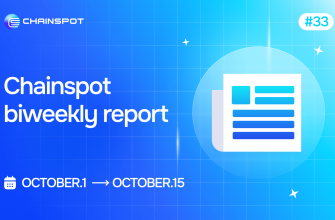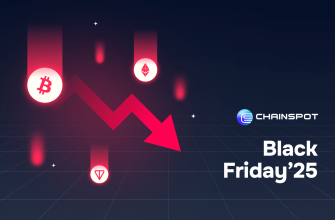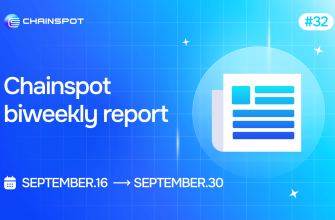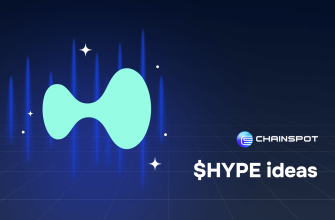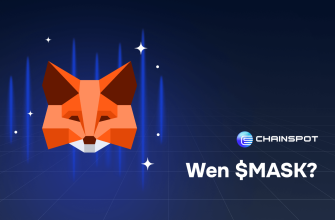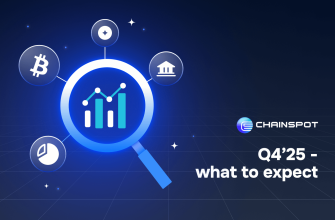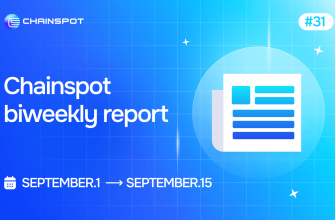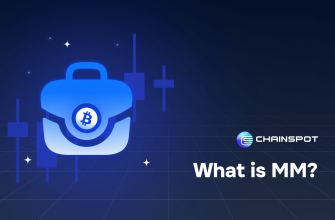- TL;DR
- 1) What counts as “insider” on-chain—and what doesn’t
- 2) Where the signals live (and how to read them)
- 2.1 GitHub (and friends) — code is the first breadcrumb
- 2.2 DAO governance & queues — the policy pipeline
- 2.3 Multisigs & deployers — follow the hands on the wheel
- 2.4 Exchange & treasury flows — the listing dance
- 2.5 Cross-chain routes — rotation leaves tracks
- 2.6 Mempool & MEV — know what you leak
- 3) Whale-watching without getting tricked
- 3.1 Labels lie (sometimes)
- 3.2 Confirm across three lenses
- 3.3 Don’t mirror size; mirror discipline
- 4) The manipulation zoo (and how to spot it before it bites)
- 4.1 Wash trading (spot, NFTs, low-cap tokens)
- 4.2 Spoofing & fake walls (CEX OBs)
- 4.3 Sandwich MEV (DEX swaps)
- 4.4 Flash-loan pump & dump
- 4.5 Team wallets as exit liquidity
- 5) DEX survival kit for newcomers (the boring stuff that saves accounts)
- 5.1 Wallet & approvals
- 5.2 Slippage & order type
- 5.3 Route & gas hygiene
- 5.4 Liquidity checks (never skip)
- 5.5 Risk & journaling
- 6) Riding the “inside” wave legally: a practical (and ethical) playbook
- 6.1 The four-tile mosaic
- 6.2 Event-driven timing
- 6.3 Cross-chain rotations
- 6.4 Copying whales (with dignity)
- 6.5 The “no-touch” list
- 7) Three realistic case sketches (fictionalized, pattern-true)
- Case 1 — The Emissions Flip
- Case 2 — The Oracle Switch Caution
- Case 3 — The New L2 Liquidity Walk
- 8) Compliance & ethics (because grown-ups trade longer)
- 9) The high-leverage edge you always control: cost
- 10) A one-page checklist you can use tomorrow
- Closing thoughts
A 4,500–5,000 word field guide to reading public on-chain signals, separating noise from edge, and protecting yourself on DEXs—plus an ethical playbook for riding the wave when “insiders” move in public.
Important: This article is educational, not legal advice. “Insider trading” has a strict legal meaning in many countries (trading on material, non-public information or manipulating markets). We do not teach or endorse anything illegal. Everything below focuses on public data, open governance, and behavioral patterns you can observe without breaking rules—or your account.
TL;DR
-
The new “inside trading” meta isn’t about stolen secrets; it’s about being inside the data stream. GitHub releases, DAO proposals, Safe (multisig) queues, timelocks, deployer wallets, and whale routes are all public—if you can see them fast and understand what they mean.
-
Most “alpha” dies in the details: false positives, sybil wallets, wash volume, spoof bids, and marketing stunts. Build filters. Learn the rhythm of when things matter (before timelock execution, after guardian upgrades, during funding resets).
-
If you’re new to DEXs, your first job isn’t to outsmart whales. It’s to avoid their traps: slippage, broken approvals, honey-pots, sandwich MEV, and thin-book sweeps.
-
If you want to piggyback ethically, track public signals (governance, code releases, timelocks), combine them with depth and funding context, and execute with tight costs. That means routing swaps/bridges efficiently, using limit/RFQ where possible, and journaling PnL honestly.
-
When you need to jump chains fast (airdrop claims, new pools, listing rotations), route with an aggregator that compresses costs and pays you back.
👉 Bridge & swap in one click (loyalty cashback + referrals): app.chainspot.io
1) What counts as “insider” on-chain—and what doesn’t
Traditional insider trading = trading on material, non-public information or manipulating the market. On-chain, almost every step of a serious project’s life is public by default:
-
A core dev pushes a commit → you can see a diff or a release tag.
-
A DAO queues a transaction in its Gnosis Safe → you can see function signatures and parameters in the queue.
-
A protocol arms a timelock to change fees, emissions, or oracle sources → you can read the ETA, literally to the block.
-
A team deploys a new contract → you can see the bytecode, the admin role, the proxy, the initial storage.
So why do some traders consistently get there first? Because they live inside those streams, not on crypto Twitter. “Inside trading” in 2025 is largely public-data latency + pattern literacy. You don’t need secrets; you need a repeatable way to separate signal from noise and to act without donating half your edge to fees.
What’s off-limits (and we won’t show it): buying hacked databases, spoofing books, wash trading, or coordinating price manipulation. Besides being wrong, it gets accounts frozen and reputations torched. This guide stays on the right side: public data, fair execution, smart risk.
2) Where the signals live (and how to read them)
Think of your inputs as a mosaic. One tile rarely means much by itself. Three or four together? That’s a trade.
2.1 GitHub (and friends) — code is the first breadcrumb
What matters:
-
Tagged releases (v1.4.0 → v1.5.0) with meaningful notes (e.g., “enable L2 fees,” “switch oracle,” “merge governance module”).
-
Sudden private→public repo changes, or a burst in merged PRs touching emission math, fee paths, or governance guards.
-
Package registries (npm, crates.io, PyPI) where SDKs update before marketing does.
How to avoid traps:
-
Not all commits ship; many are dead branches. Weight release tags and published packages > raw commits.
-
Match code to on-chain reality: if a repo says “fee to 0.1%,” check if the DAO actually queued the change.
2.2 DAO governance & queues — the policy pipeline
Modern DAOs broadcast their moves:
-
Snapshot, Tally, Agora: off-chain signaling, early discourse.
-
Gnosis Safe & Timelocks: the on-chain truth. A queued tx with a 48h timelock tells you exactly when something goes live.
Signals that move price/flow:
-
Emission changes (boost or cut) for a pool/token.
-
Oracle switchovers (fast feeds vs TWAP; stable vs exotic).
-
Fee route changes (more fees to ve-holders, buyback toggles).
-
Collateral lists (adding/removing assets).
-
Emergency guardianship (freeze/unfreeze).
Pro move (still ethical): build a habit of checking the queue’s ETA and the function signature. “setFee(30)” with a timelock hitting tonight? That’s real. Blog posts later are just confirmation.
2.3 Multisigs & deployers — follow the hands on the wheel
-
Deployer clusters: Many teams reuse an EOA or a known proxy admin. When that address spins a new implementation, you’ll see it before the tweet.
-
Safe owners: A new signer added? A threshold changed from 3/5 to 2/3? That can precede a busy shipping week (or an emergency).
-
Queued upgrades: Upgradable proxies reveal implementation addresses; a new implementation approved + timelock scheduled is actionable.
Filter: Lots of projects test in public. Look for value path edits: modules touching mint, burn, fee, reward, oracle. UI components alone rarely move tokens.
2.4 Exchange & treasury flows — the listing dance
-
CEX hot wallets: Big inflows of a mid-cap token to a top exchange before a “surprise” listing? Not gospel, but worth a watch.
-
Treasury mints/redemptions: A stablecoin issuer’s mint to an exchange cluster often precedes liquidity events (not investment advice; treat as context).
Caveat: Teams have learned to obfuscate flows. Use this as a weak prior, not a trigger.
2.5 Cross-chain routes — rotation leaves tracks
-
Bridge contracts light up hours before announcements: if TVL and tx count spike into a brand-new L2, someone is staging.
-
Gas token funding on a new chain (small, regular deposits to many fresh wallets) can preface airdrops or campaign launches.
Practical angle: If you’re going to rotate, rotate cheaply—more on execution later. Paying 40–80 bps in sloppy bridges kills ⅓ of your edge before you start.
2.6 Mempool & MEV — know what you leak
-
Public mempools: Big swaps can be sandwiched. If you see repeaters buying just before every publicized tweet, they might be watching pending tx or simply front-running social signals.
-
Private channels: Many routers allow private or MEV-protected flow so your intent doesn’t leak. Use them for size.
Your takeaway: You’re not the only watcher. If you’re chasing the same breadcrumbs as 10k others, cost control and fills become your edge.
3) Whale-watching without getting tricked
“Smart money” dashboards are a good start. They’re also full of traps.
3.1 Labels lie (sometimes)
-
Deployer vs investor vs market maker: same cluster can wear all three hats in a week.
-
Custody change ≠ conviction: a fund moving assets to a different vault appears like “accumulation” and fools copy-cats.
Fix: Follow flows + behavior, not labels. Repeating patterns matter: adds on dips + never chases ≠ sprays into thin pumps.
3.2 Confirm across three lenses
-
Direction: net in/out over a week, not one tx.
-
Venue: are they buying on-chain (pool impact) or OTC (no footprint)?
-
Funding: if perps funding turns against them, are they hedged elsewhere?
When 2 of 3 line up (e.g., net buys + no hedge), confidence rises. Don’t assume genius when a whale is actually offloading to you via two hops.
3.3 Don’t mirror size; mirror discipline
Copying size is suicide. Copy risk process instead:
-
They scale in tranches.
-
They wait for structure (e.g., reclaim of a broken level, or a timelock firing).
-
They exit to rules (time stops, invalidate levels), not vibes.
4) The manipulation zoo (and how to spot it before it bites)
Knowing the dark patterns helps you avoid being the exit liquidity. We’ll describe them so you can defend, not so you can do them.
4.1 Wash trading (spot, NFTs, low-cap tokens)
Tell-tale signs:
-
High volume, low unique wallet count; few counterparties doing most of the action.
-
Prices whip in a narrow band with perfect alternation of buys/sells.
-
Liquidity teleports between pools right before leaderboard snapshots.
Your defense:
-
Trade venues with real depth; ignore leaderboard farms when slippage > fee rebate.
-
If you must test, use tiny size and time stops; don’t anchor to inflated “volume.”
4.2 Spoofing & fake walls (CEX OBs)
Tell-tale signs:
-
Large bids/offers appear just ahead of price, vanish on touch, and re-appear higher/lower.
-
The wall magically “chases” mid, corralling retail into chasing breakouts/breakdowns.
Your defense:
-
Enter on reclaims (level breaks that snap back).
-
Use limit orders; never hit obvious spoof walls.
-
If a level “sticks” because an iceberg keeps refilling, assume a real player is pinning price—tighten the plan or leave.
4.3 Sandwich MEV (DEX swaps)
Tell-tale signs:
-
You buy, price instantly ticks up before your fill and then bleeds—classic front-run and back-run.
-
Your “expected” price impact is smaller than what you got.
Your defense:
-
Use MEV-protected or private routes; prefer RFQ for size.
-
Set tight slippage (and accept missing a few fills).
4.4 Flash-loan pump & dump
Tell-tale signs:
-
Liquidity disappears from a pool, then a sudden giant swap blows price out; minutes later liquidity returns.
-
Creator/whitelist wallets are the only profitable ones.
Your defense:
-
Check pool depth before trading. If a token trades in a single shallow pool, any whale can puppet it.
-
Look for admin functions (pause, blacklist, fee spikes) in the contract. If power is centralized and docs are vague, move on.
4.5 Team wallets as exit liquidity
Tell-tale signs:
-
Unlocks or vesting cliffs approach; team wallets route through 2–3 hops into fresh EOAs and then into pools/exchanges.
-
The announcement cadence (PRs, vague “big news soon”) spikes just before these flows.
Your defense:
-
Track vesting; discount pre-cliff rallies.
-
Respect distribution charts; a 5-wallet top-10 is not “decentralized.”
5) DEX survival kit for newcomers (the boring stuff that saves accounts)
You can’t ride “insiders” if you can’t survive sandwiches and slippage.
5.1 Wallet & approvals
-
Never import a seed to web forms. Hardware wallet if possible.
-
Check and revoke allowances periodically (allowance managers make this easy).
-
For degen wallets, set spend limits per token instead of infinite approvals.
5.2 Slippage & order type
-
Start with tight slippage (0.1–0.5% majors; 0.5–1.0% volatile pairs).
-
Prefer limit/RFQ where available.
-
Split size (TWAP). Chopping an order into five small bites often beats one big gulp.
5.3 Route & gas hygiene
-
Gas spikes during news → your cheap route becomes expensive mid-flight.
-
Use an aggregator that composes swap + bridge in one transaction and kicks back cashback—saved basis points are real edge when you rotate a lot.
👉 Route cheaper, earn rebates: app.chainspot.io
5.4 Liquidity checks (never skip)
-
Depth at 10–50 bps either side of mid.
-
Unique counterparties in last 24h (not just raw volume).
-
Contract: verified? proxy? admin roles? freeze/blacklist functions?
5.5 Risk & journaling
-
1–2% risk per idea.
-
Hard stops and reduce-only TPs.
-
Journal why you traded, when you’ll exit, and what you learned.
-
If your edge is “follow X whale,” your journal should tally all whale signals—so you don’t cherry-pick the winners in your memory.
6) Riding the “inside” wave legally: a practical (and ethical) playbook
6.1 The four-tile mosaic
A trade idea is stronger when you have at least four of these tiles:
-
Code: a tagged release that obviously affects value paths (fees, emissions, oracles).
-
Governance: a proposal passed and a transaction queued with a clear ETA.
-
On-chain prep: the deployer or Safe cluster approves a new implementation or funds a new pool.
-
Behavioral: whales adjust inventory in the direction your thesis implies (net buying or LPing the relevant pool).
When all four rhyme, you have public, reproducible signals. You’re not guessing; you’re reading.
6.2 Event-driven timing
-
Before timelock: market often drifts in anticipation. Size small; you’ll get liquidity.
-
At execution: spreads widen; be a maker, not a chaser.
-
After execution: if the change truly shifts flows (e.g., fee share to ve-holders), follow-through can last days. Scale, don’t sprint.
6.3 Cross-chain rotations
-
If an L2/L3 is about to host emissions, liquidity walks there.
-
Stage gas + stables on that chain ahead of the window so you don’t pay peak gas.
-
Use a swap+bridge aggregator to compress bps and settle fast—this is the difference between “spotted it” and “caught it.”
👉 Bridge & swap in one go (cashback): app.chainspot.io
6.4 Copying whales (with dignity)
-
Define which whale you’re following (builder multisig? quant desk? LP strategist?).
-
Only act when flow + venue + funding all agree.
-
If you chase a whale into thin air, you are the exit. Trade smaller; let them prove it on the tape.
6.5 The “no-touch” list
-
Anything requiring non-public access (private repo leaks, employee DMs, hacked dashboards).
-
Anything that smells like manipulation (spoof campaigns, wash volume, pump-and-dump groups).
-
Assets with centralized blacklists that can arbitrarily block transfers—one tweet and you’re stuck.
7) Three realistic case sketches (fictionalized, pattern-true)
Case 1 — The Emissions Flip
-
Code: A DEX’s core math changes in a tagged release; fee path now routes 10% more to ve holders.
-
Gov: Proposal passes; setFeeSplit(90/10) queued with a 48h timelock.
-
On-chain prep: Multisig funds a new bribe gauge; deployer approves a fresh implementation.
-
Behavioral: Top ve-holders stop selling weekly unlocks; one MM adds liquidity.
Trade: Accumulate ve token before timelock at maker prices. Post-lock, add on first reclaim. Take partials at previous weekly supply zones. Journaling outcome, not just screenshots.
Execution: Staged stables on the target chain using Chainspot the day prior; net route cost <10 bps with cashback.
Case 2 — The Oracle Switch Caution
-
Code: Protocol adds an optional fast oracle with fallback to TWAP.
-
Gov: Proposal to switch to fast feed during volatile events passes.
-
On-chain: Timelock set for Friday 18:00 UTC.
-
Behavioral: Perps funding for the token spikes positive into the change.
Action: Stand down. Fast oracles + thin books = wick risk. Trade after the first post-switch hour confirms stability. Sometimes “not trading” is the win.
Case 3 — The New L2 Liquidity Walk
-
Signal: Bridge inflows surge into a fresh L2; team deploys gauge contracts; gas token funding appears in many small wallets.
-
Plan: Pre-fund gas and stables 24h early via Chainspot. On launch, LP tiny to farm points, trade the most liquid pair only, and rebate fees as maker.
Result: Two days later, emissions schedule underwhelms. Exit LP, keep a minimal wallet alive for future campaigns, rotate profits back to your yield chain via Chainspot (earns cashback again).
8) Compliance & ethics (because grown-ups trade longer)
-
No MNPI. If you’re considering anything not publicly accessible—stop.
-
No manipulation. Spoofing, wash trading, or coordination are illegal on many venues and detectable on-chain.
-
Disclosures. If you publish, disclose positions.
-
Taxes. Airdrops, incentive tokens, and trading PnL are often taxable. Track basis; don’t learn that lesson the hard way.
-
Security. Phishing kills edge. Claims should be on official domains; never paste seeds; approve only what you must.
9) The high-leverage edge you always control: cost
Most retail giveaways happen between good ideas and poor execution:
-
Market buying into 2% price impact because you didn’t check depth.
-
Paying 20–60 bps in avoidable bridge/slippage because you were in a rush.
-
Missing the window while waiting for slow routes to settle.
Build a permanent habit:
-
Simulate routes and check expected impact.
-
Prefer RFQ / limit and MEV-protected flows.
-
Aggregate swap+bridge so you don’t string fees.
-
Let loyalty rebates claw back bps.
👉 This is literally what Chainspot does: one-click route across bridges + DEXs, picking the cheapest path and crediting cashback (and referral share if friends copy your link).
Start here → app.chainspot.io
10) A one-page checklist you can use tomorrow
-
Define your four-tile mosaic (Code, Gov, On-chain prep, Behavior).
-
Pre-fund gas + stables on the likely venue/chain (cheaply, via Chainspot).
-
Check depth and unique counterparty counts; no thin pumps.
-
Enter with limits; use reduce-only TPs; set hard stops.
-
Avoid new entries during funding windows and exact headline minutes.
-
Journal why, size, exit.
-
Review weekly: which tiles lied? Adjust filters.
-
Rotate profits back to your home chain with Chainspot (cashback → compounding).
Closing thoughts
The on-chain “inside trading” meta isn’t a secret club. It’s the result of showing up where the truth lives—in repos, queues, timelocks, deployers, and real money flows—before the blog posts. If you can read those streams, filter the noise, and execute cheaply, you don’t need a hotline to a founder to trade well.
Focus on public signals, fair methods, and boring discipline. Respect depth, protect yourself from MEV and spoof walls, and keep your capital nimble across chains so you’re always one click from the venue that matters. The next time a “mystery whale” moves, you won’t chase—you’ll already be there, with costs under control and a plan in your journal.
👉 Bridge & swap the smart way (earn loyalty cashback + referrals): app.chainspot.io
Stay curious. Stay ethical. Stay solvent.





